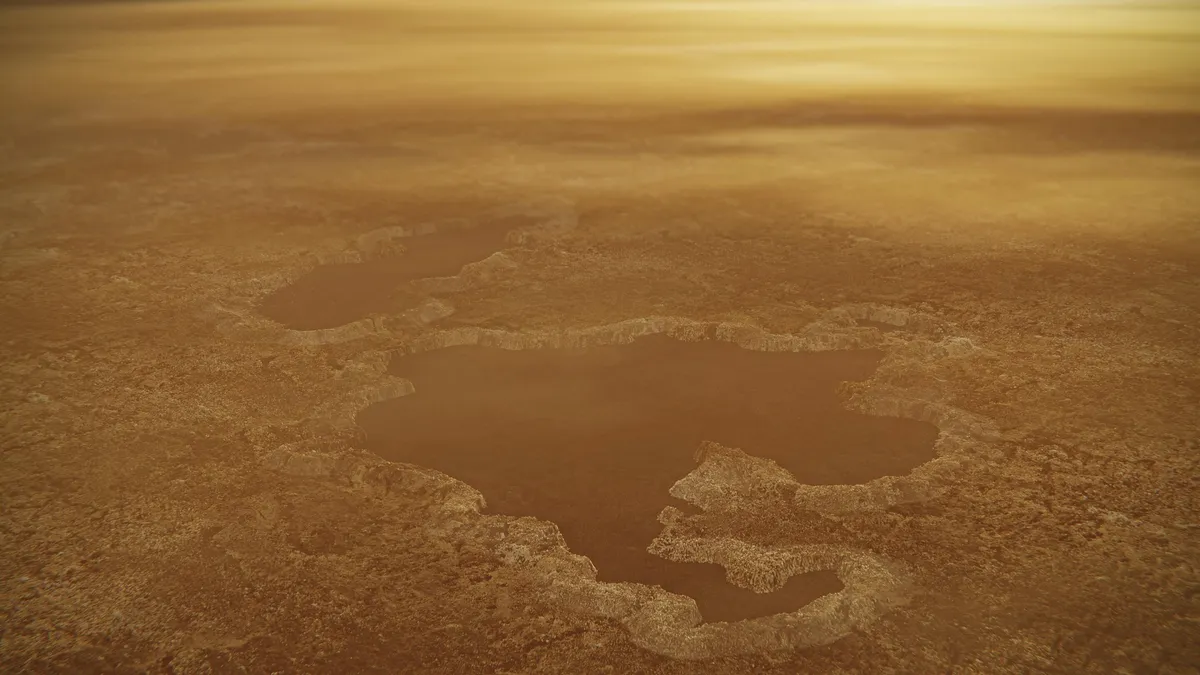
Titan, the largest moon of Saturn, is an enigmatic and alien world that has captivated scientists and researchers for decades. Its surface is adorned with rivers and lakes filled with liquid methane, alongside icy boulders and expansive dunes resembling soot-like sand. This unique topography has led to ongoing speculation regarding the possibility of life-forms existing beneath its dense, hazy atmosphere.
An international team of researchers, co-led by Antonin Affholder from the University of Alberta Department of Ecology and Evolutionary Biology and Peter Higgins from Harvard University's Department of Earth and Planetary Sciences, has taken on the challenge of developing a realistic scenario for potential life on Titan. Their study aims to uncover where life could exist on this intriguing moon, how much life might be present, and what makes Titan distinct compared to other icy moons in our solar system.
According to Affholder, who serves as a postdoctoral research associate, Titan's unique feature is its abundant organic content. Through the use of bioenergetic modeling, the research team discovered that Titan's subsurface ocean, which could be as deep as approximately 300 miles, has the potential to support life-forms that utilize organic material. Their findings, published in The Planetary Science Journal, suggest that while Titan may harbor simple, microscopic life, it likely supports only a minimal biomass overall, estimated at just a few pounds.
Titan is often described as an Earthlike entity on the surface while being an ocean world underneath. It has been selected as a target for future exploration, specifically through NASA's Dragonfly mission. Although various theories have emerged about the potential for living organisms on Titan, many previous estimates have suffered from an overly simplistic perspective. Affholder points out that the assumption that Titan's abundant organics would provide ample food sources for life is misleading.
The research advocates for a more nuanced understanding of Titan's ecology. Affholder notes that not all organic molecules present on Titan can serve as food sources. The vast ocean beneath Titan's surface has limited exchange with the surface, where much of the organic material resides. This presents a complex scenario for potential life on the moon.
At the core of this research lies the concept of fermentation, one of the simplest biological metabolic processes. This method, utilized in sourdough breadmaking and beer brewing, requires only organic molecules and does not necessitate an oxidant like oxygen, which is essential for more complex metabolic processes such as respiration. Affholder suggests that fermentation may have evolved early in Earth's history, enabling life to thrive on organic molecules left over from the planet's formation.
The researchers specifically focused on glycine, the simplest known amino acid, as a potential food source for microbial life on Titan. Affholder explains that glycine is abundant in primordial matter found throughout the solar system, including asteroids and comets. However, their computer simulations indicated that only a small fraction of Titan's organic material is suitable for microbial consumption.
For glycine-consuming microbes to survive in Titan's ocean, they would need a consistent supply of amino acids from the moon's surface, which is separated by a thick icy shell. Previous studies by the same team indicated that meteorite impacts could create melt pools of liquid water, enabling surface materials to reach the ocean. Yet, the new research reveals that this supply might only sustain a minuscule population of microbes, totaling just a few kilograms—comparable to the mass of a small dog. This translates to an average of less than one microbial cell per liter across Titan's expansive ocean.
As researchers gear up for future missions to Titan, the likelihood of discovering life—if it exists—could resemble searching for a needle in a haystack. The team's findings suggest that Titan's rich organic inventory may not be as readily available to support life as previously thought. Affholder summarizes, "We conclude that Titan's uniquely rich organic inventory may not play the role in the moon's habitability to the extent one might intuitively assume."